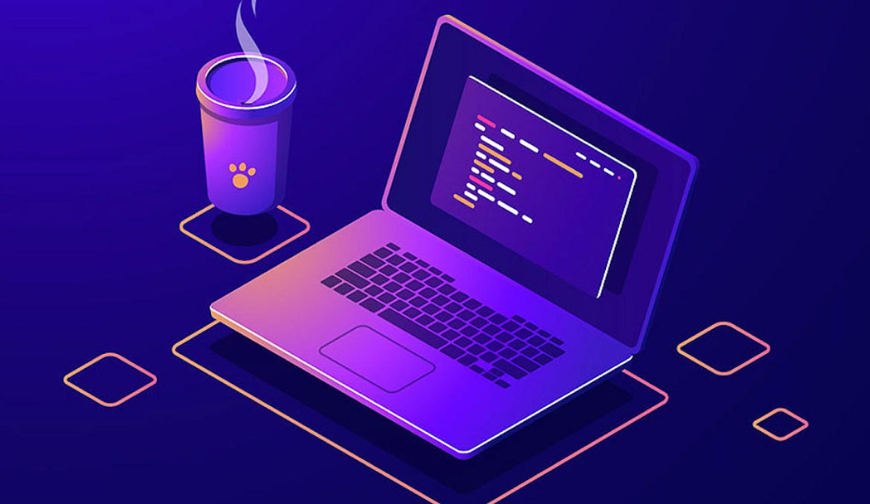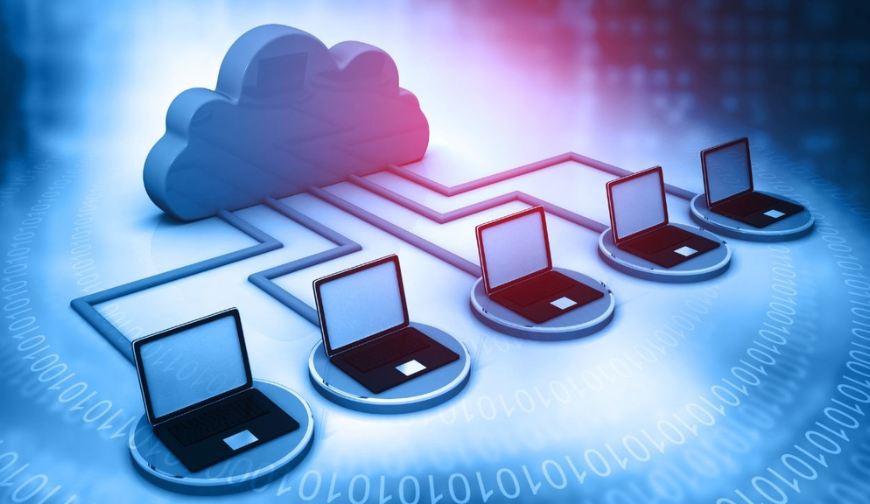In the realm of web development, PHP stands out as one of the most powerful and versatile scripting languages. When combined with the LAMP stack – Linux, Apache, MySQL, and PHP – it forms a robust foundation for creating dynamic web applications. This article delves into the intricacies of PHP and the LAMP stack, exploring how they work together to empower developers in building feature-rich web solutions.
Understanding PHP: A Brief Overview
PHP, Hypertext Preprocessor, is a server-side scripting language renowned for its simplicity and flexibility. Originally designed for creating dynamic web pages, PHP has evolved into a full-fledged programming language capable of handling complex tasks such as database manipulation, session management, and form processing.
Components of LAMP Stack
The LAMP stack comprises four essential components, each playing a crucial role in web application development:
Linux Operating System
Linux serves as the operating system for hosting the web server and other necessary services. Its open-source nature and robust security features make it an ideal choice for server environments.
Apache Web Server
Apache is a widely used HTTP server that delivers web content to clients’ browsers. It supports various features such as URL rewriting, virtual hosting, and SSL encryption, making it highly customizable and adaptable to diverse requirements.
MySQL Database
MySQL is a popular relational database management system used for storing and managing data in web applications. Its scalability, performance, and reliability make it a preferred choice for developers worldwide.
PHP Programming Language
PHP acts as the scripting language responsible for generating dynamic content and interacting with the web server and database. Its seamless integration with Apache and MySQL enables rapid development of web applications.
Advantages of Using LAMP Stack for Web Development
The LAMP stack offers several advantages for web development, including:
- Cost-effectiveness: All components of the LAMP stack are open-source, eliminating licensing fees and reducing overall project costs.
- Flexibility: Developers have the freedom to customize and extend the functionality of each component according to project requirements.
- Community Support: The LAMP stack enjoys a large and active community of developers, ensuring continuous improvement, support, and availability of resources.
- Scalability: LAMP-based applications can easily scale to accommodate growing user bases and increased demand.
- Security: With regular updates and robust security features, the LAMP stack provides a secure environment for hosting web applications.
Setting Up LAMP Stack Environment
Before diving into PHP development, it’s essential to set up a LAMP stack environment on your system. This involves installing and configuring each component individually to ensure seamless integration and optimal performance.
Getting Started with PHP Programming
Basic Syntax and Variables
PHP syntax is similar to that of C and Perl, making it relatively easy to learn for developers familiar with these languages. Variables in PHP are declared using the $ symbol, followed by the variable name.
Control Structures
PHP supports various control structures such as if-else statements, loops, and switch cases, allowing developers to execute code conditionally and iteratively based on specific criteria.
Functions
Functions in PHP enable developers to encapsulate reusable blocks of code, promoting code reusability and maintainability.
Arrays
Arrays are versatile data structures in PHP, capable of storing multiple values under a single variable name. They can be indexed or associative, offering flexibility in data manipulation.
Forms and Data Handling
PHP facilitates seamless handling of form data submitted by users, enabling developers to process user input, perform validation, and interact with databases.
Integrating PHP with MySQL Database
Establishing Database Connection
Connecting PHP with MySQL involves configuring connection parameters such as host, username, password, and database name using the mysqli_connect() function.
Executing SQL Queries
PHP allows developers to execute SQL queries using functions like mysqli_query(), enabling data retrieval, insertion, updating, and deletion operations.
Fetching and Displaying Data
Retrieved data from the database can be displayed on web pages using PHP’s echo or print statements, combined with HTML markup to structure and format the output.
Handling Errors
PHP provides robust error handling mechanisms to gracefully handle database-related errors, ensuring smooth functioning of web applications.
Creating Dynamic Web Applications with PHP and LAMP Stack
PHP and the LAMP stack empower developers to create dynamic web applications with rich functionality and interactivity. Here are some key aspects of dynamic web application development:
User Authentication and Session Management
Implementing user authentication and session management features ensures secure access to web applications and personalized user experiences.
Data Validation and Security Measures
Validating user input and implementing security measures such as input sanitization and parameterized queries are crucial for protecting against security vulnerabilities such as SQL injection and cross-site scripting (XSS) attacks.
Dynamic Content Generation
PHP enables the dynamic generation of content based on user interactions, database queries, and external data sources, facilitating real-time updates and personalized content delivery.
Integration with Frontend Technologies
PHP seamlessly integrates with frontend technologies such as HTML, CSS, and JavaScript, allowing developers to create dynamic and interactive user interfaces.
Optimizing PHP Code for Performance
Optimizing PHP code is essential for ensuring optimal performance and scalability of web applications. Some best practices include:
Caching Techniques
Implementing caching mechanisms such as opcode caching and data caching can significantly improve the performance of PHP applications by reducing redundant computations and database queries.
Database Optimization
Optimizing database queries, indexing frequently accessed columns, and minimizing database calls can enhance the overall performance and responsiveness of PHP-based web applications.
Code Profiling
Profiling PHP code using tools like Xdebug or built-in profiling functions helps identify performance bottlenecks and areas for optimization, leading to more efficient code execution.
Best Practices for PHP Web Development
Following best practices is essential for maintaining code quality, security, and scalability in PHP web development projects. Some key practices include:
Maintainable Code Structure
Adopting a modular and organized code structure, adhering to coding standards, and documenting code effectively enhances code maintainability and readability.
Security Practices
Implementing security measures such as input validation, output escaping, user authentication, and access control helps mitigate security risks and protect against common vulnerabilities.
Error Handling and Logging
Proper error handling and logging mechanisms ensure that errors and exceptions are handled gracefully, enabling developers to identify and troubleshoot issues efficiently.
Testing and Debugging PHP Applications
Unit Testing
Writing unit tests for PHP code using frameworks like PHPUnit helps ensure code reliability, identify bugs early in the development process, and facilitate code refactoring with confidence.
Debugging Tools and Techniques
Using debugging tools such as Xdebug, Firebug, or browser developer tools allows developers to trace code execution, inspect variables, and diagnose issues during development and testing phases.
Deploying PHP Applications on LAMP Server
Configuration and Setup
Deploying PHP applications on a LAMP server involves configuring the server environment, setting up virtual hosts, and ensuring proper permissions and security settings.
Deployment Strategies
Various deployment strategies such as manual deployment, continuous integration/continuous deployment (CI/CD), and containerization (using tools like Docker) offer flexibility and scalability in deploying PHP applications.
Monitoring and Maintenance
Monitoring server performance, application health, and security updates is essential for maintaining the reliability and security of PHP applications deployed on LAMP servers.
Exploring PHP Frameworks for Rapid Development
PHP frameworks such as Laravel, Symfony, and CodeIgniter offer pre-built components, libraries, and conventions that streamline development and accelerate time-to-market for web applications.
Future Trends in PHP and LAMP Development
As technology continues to evolve, the future of PHP and LAMP development is poised for innovation and advancement. Emerging trends such as containerization, microservices architecture, and serverless computing are reshaping the landscape of web application development.
Conclusion
In conclusion, PHP and the LAMP stack provide developers with a powerful platform for creating dynamic and scalable web applications. By leveraging the strengths of each component and following best practices in PHP development, developers can build robust, secure, and high-performance web solutions that meet the evolving needs of users and businesses alike.
FAQs
- Is PHP still relevant in modern web development? Despite the emergence of new technologies, PHP remains a popular choice for web development due to its ease of use, extensive community support, and wide range of frameworks and libraries.
- How does PHP compare to other server-side scripting languages? PHP offers a balance of simplicity, flexibility, and performance, making it a preferred choice for many developers. However, the choice of language often depends on project requirements, team expertise, and specific use cases.
- What are the security considerations when developing PHP applications? Security is paramount in PHP development, and developers must implement measures such as input validation, output escaping, parameterized queries, and user authentication to mitigate common security risks such as SQL injection, cross-site scripting (XSS), and session hijacking.
- What role does the LAMP stack play in PHP development? The LAMP stack provides a comprehensive and reliable environment for hosting PHP applications, offering the necessary components – Linux, Apache, MySQL, and PHP – to build and deploy web solutions efficiently.
- How can I stay updated on the latest trends and best practices in PHP development? Keeping abreast of industry blogs, forums, conferences, and online courses dedicated to PHP development can help developers stay informed about the latest trends, technologies, and best practices in the PHP ecosystem.



